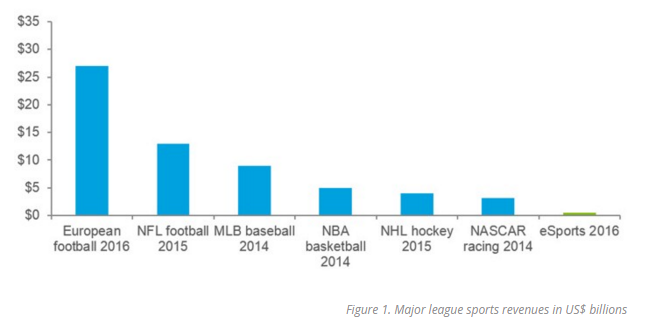Today once more new predictions are here to forecast the weather surrounding the e-sports market for the year to come. This time, Deloitte, one of the biggest expertise companies in the world, has given us some insight into what to expect in 2016, a good sign?
In their report they tell us that the competitive video game market is worth roughly 500 million dollars and has a global audience of 150 million people. As Thiemo Brautigam, from the site esportobserver, reminds us: it’s one more study that contrasts with those that already exist. Newzoo estimated that e-sport would generate at least 465 million dollars in 2014, whereas Superdata thinks that in 2015 the market was worth 748 million dollars and would shoot past the billion dollars in the year 2016.

Is it really possible to give reliable estimates that translate a real trend? We can already imagine these data fuel discussions for many “esport-enthusiasts”. However, how much credibility can we give this study? Indeed, as we take a look at the sources that were used in Deloitte’s work, we notice that the cabinet also relied upon numbers that are readily available to the public and press releases. If some of these sources are very serious, we do however find this:
What should we understand here? First that Deloitte doesn’t actually use any of these numbers, not those found by Newzoo or those given by Superdata. This must mean that, for the cabinet, these numbers are not reliable and do not seem to conform to any kind of reality. Moreover, not taking into account the results, the method used – the fact of simply stating a mid-point – leaves us puzzled and worries us about the true credibility of this report. So what conclusion can we draw from this? Electronic sport continues to grow steadily but the reality of the market is no clearer. If it is possible to draw a strong outline of the phenomenon, it is very difficult to actually pin down a true numerical trend. Are the sources to put together such a study really available?
Once more we have witnessed an external organization attempt to extend its influence and bring its expertise concerning a sector or an industry the codes of which it does not comprehend. How to use low level lobbying? Is it dangerous to see these companies cannibalize the commercial strength of a growing industry? The e-sport protagonists must react: we’re not just talking about a question of realization, but a veritable leap forwards here!
To continue its development, electronic sport needs the correct, reliable and independent measurement tools to evaluate its audiences. Tomorrow e-sport will have to answer to the general public, and in order to convince them as well as have a margin of negotiation, it is important to know your own political weight. How many players, spectators? How many competition circuits? How many associations, volunteers? No one can answer all these questions clearly today. Many companies close the door in your face when you ask for what they might call “sensitive information”. The associative world is divided, young and still has issues organizing itself. To gain stability and vision, e-sport needs to be better implemented on a local scale. These groups need to get along, cooperate, and for this we need a common desire to move forwards together!



